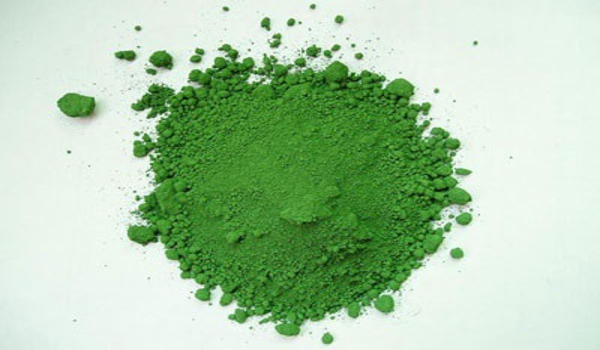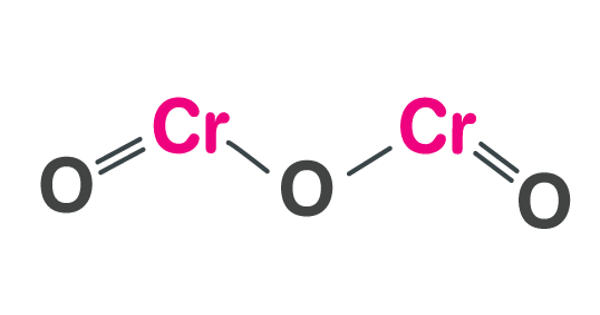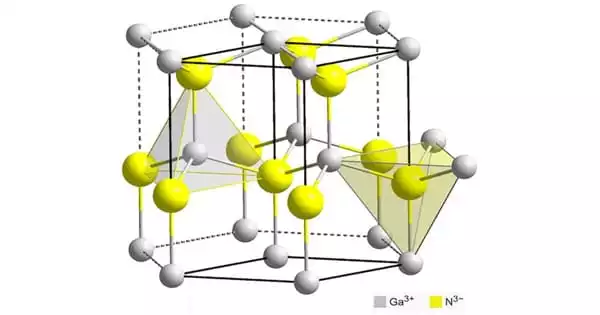Chromic oxide is an inorganic compound with the formula Cr2O3. It is a dull, olive-green color pigment that occurs naturally as the mineral eskolaite. It is an oxide Cr2O3 obtained as a green powder by thermal decomposition of most chromium compounds or by reduction of sodium dichromate or sodium chromate and used as the very permanent pigment chrome oxide green, as a coloring agent for glass and ceramic ware, and as a catalyst. It is one of the principal oxides of chromium and is used as a pigment. It is a process for synthetically producing anhydrous, opaque chrome oxide green was developed in 1809 by Vauquelin. In nature, it occurs as the rare mineral eskolaite. It is also called Dichromium trioxide, or Chromium (3+) oxide, or Chromium (III) oxide.
Structure and properties
Cr2O3 has the corundum structure, consisting of a hexagonal close packed array of oxide anions with 2⁄3 of the octahedral holes occupied by chromium. Similar to corundum, Cr2O3 is a hard, brittle material (Mohs hardness 8 to 8.5). It is antiferromagnetic up to 307 K, the Néel temperature. It is not readily attacked by acids.

Occurrence
Cr2O3 occurs naturally as the mineral eskolaite, which is found in chromium-rich tremolite skarns, metaquartzites, and chlorite veins. It naturally occurs in a mineral eskolaite, which is mostly found in chromium-rich skarns, tremolite, chlorite veins, and meta quartzites. Eskolaite is also a rare component of chondrite meteorites.
Chromium (III) oxide appears as a fine light to dark green, hexagonal crystal. The mineral is named after Finnish geologist Pentti Eskola. It is amphoteric and insoluble in water.
Applications
Chromic oxide has limited use in paints because of its dull color. Because of its considerable stability, chromia is a commonly used pigment. It was originally called viridian. It is used in paints, inks, and glasses. It is the colorant in “chrome green” and “institutional green.”
However, it absorbs infrared radiation well and this has led to its use in deck paints and camouflage coatings for military purposed. Chromium(III) oxide is a precursor to the magnetic pigment chromium dioxide, by the following reaction:
Cr2O3 + 3 CrO3 → 5 CrO2 + O2
Along with many other oxides, it is used as a compound when polishing (also called stropping) the edges of knives, razors, surfaces of optical devices etc. on a piece of leather, balsa, cloth or other material. It is available in powder or wax form, and in this context it is known as “green compound”.
Uses
- It is used in electric semiconductors.
- Used in the coloring glass.
- Used in dyeing polymers.
- Used as a catalyst to prepare butadiene.
- Used in stainless steel polishing.
- Used in welding metals.
Informatin Source:
















